

ENGLISH - ITALIANO - CASTELLANO
Read more about our vision, mission, and core values by following this link.
Official Website of the United Roman-Ruthenian Church and the Pontifical Imperial State of Rome-Ruthenia
(also referred to as the Roman-Ruthenian Church and State)
Please be advised: any website or entity not listed below, or
any unauthorized use of the names, titles, or symbols associated with
the Roman-Ruthenian Church and State, is unofficial and not affiliated
with the legitimate and singular Roman-Ruthenian Church and State.
Official Websites of the Church:
www.statopontificio.org
www.catholicate.org
www.ilnunzioromano.org
Official Websites of the Prince-Bishop:
www.radislav.org
www.rutherfordjohnson.com
www.statopontificio.org/johnson-roma-rus

WHO
ARE THE PEOPLE OF THE UNITED ROMAN-RUTHENIAN CHURCH?
Find
out by following this link!

Q: What is the official status of the United Roman-Ruthenian Church?
The United Roman-Ruthenian Church is a canonical autocephalous patriarchal Apostolic Church of ancient Orthodox and Catholic origins.
Q: What are the main parts of the United Roman-Ruthenian Church?
The
main divisions of the
United Roman-Ruthenian Church are the Diocese of Rome-Ruthenia and the Catholicate of
Rome-Ruthenia. Read about who the
Church's people are here.
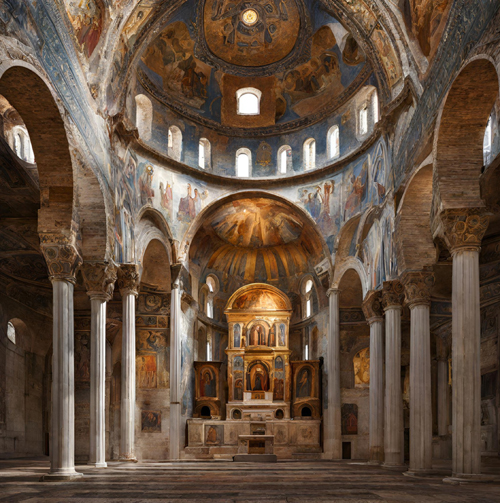
Q: What liturgical rites are used by the United Roman-Ruthenian Church?
The United Roman-Ruthenian Church currently has four primary liturgical rites: the Gallo-Russo-Byzantine Rite, the Anglican-Byzantine Rite, the Anglo-Roman (Anglican) Rite, and the Gallo-Roman (Gallican) Rite. Usually any traditional Orthodox or Catholic liturgical rite may be used.
Q: What is the Pontifical Imperial State of Rome-Ruthenia?
In the rich tapestry of history, the states of the Church transcend time and hold great significance. The Pontifical Imperial State of Rome-Ruthenia is the titular secular wing of the United Roman-Ruthenian Church. It is the combination of the historic Pontifical Roman State and the Pontifical Kingdom of Ruthenia and All Rus' to which the Church is heir, carrying a legacy that spans centuries.
To
foster a sense of unity and represent
all the historical territories associated with the patrimony of the
United Roman-Ruthenian Church (which include various historic states, among which area an empire, three kingdoms,
several principalities, and more), the
modern name - Pontifical Imperial State of Rome-Ruthenia - was
chosen. Uniting these historic states under one banner of
fellowship strengthens the bonds of collective
heritage
within the United Roman-Ruthenian Church and writes a new
chapter in their shared history. Despite our diverse
backgrounds,
we are all part of a greater whole. Today the Pontifical Imperial
States stands as an
ethno-religious cultural nation without political territory
that
constitutes a state unto itself, representing people across multiple
modern political countries. Indeed, the Church does not seek political
territory and leaves the governance of such territory to the
governments of the respective modern civil states.
Historical and Canonical Legitimacy
Read more here.
Temporal Rights
Read more here.
The Roman-Ruthenian Papal Title
Read more here.
Q: Why do the United Roman-Ruthenian Church and Pontifical Imperial State continue to use titles of nobility?
In modern world, the use of titles of nobility may seem antiquated or pretentious to some. However, they provide a sense of tradition and continuity, linking the current church with both the past and the future. Critics argue that such titles are unnecessary in modern times, where meritocracy is often valued over inherited privilege. However, it is important to remember that these titles do not solely represent wealth or social standing. They symbolize dedication to service, devotion to faith, and commitment to upholding the principles upon which the Church was founded. (See also the Roman-Ruthenian Nobility Association.)
Q: Why does the United Roman-Ruthenian Church continue to claim the Pontifical Imperial State if it does not control any actual territory anymore?
The Church's continued claim over the Pontifical Imperial State may seem puzzling to some, given that it no longer possesses any actual political territory. Historical significance, autonomy from secular authorities, diplomatic recognition, and protection of church assets all are contributing factors.
The Church's claim is rooted in its historical significance, for the Church still recognizes its historical connection and significance to the areas that once comprised the Pontifical Imperial State, even though they now belong to other modern political countries. Also, by maintaining its claim over the Pontifical Imperial State, the Church asserts its autonomy and independence from secular authorities. This symbolic declaration reinforces the Church's position as a sovereign entity and serves as a reminder of its spiritual authority. That allows the Church to maintain diplomatic relations with other entities, participate in international affairs, and to function as a sovereign state unto itself, despite lacking political territory. Furthermore, this claim acts as a safeguard against any possible challenges or encroachments on historical assets.
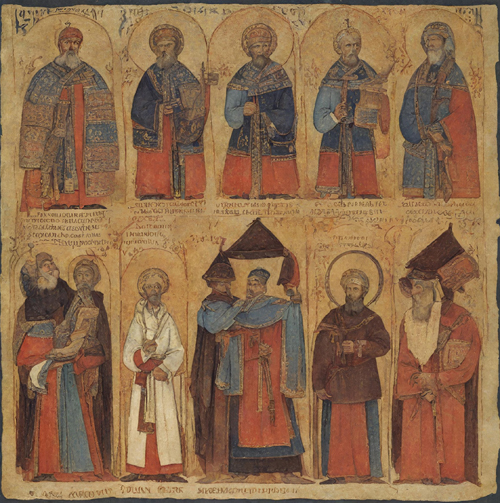
Q: What is the Holy Apostolic See of Saints Peter, Andrew, Stephen, and Mark?
This name refers to the patron saints of the Prince-Bishop as Pope-Catholicos of Rome-Ruthenia and Supreme Pontiff of the United Roman-Ruthenian Church (the Apostles Peter and Andrew the First-Classed), the Diocese of Rome-Ruthenia (whose patron saint is St. Stephen the Apostle and Archdeacon), and the Metropolitan See of Aquileia (whose founder and patron saint is Saint Mark the Apostle and Evangelist). These are the diocesan and metropolitan jurisdictions of the Supreme Pontiff of the United Roman-Ruthenian Church.
Q: Is the Church in the United Nations?
Q: Is the United Roman-Ruthenian Church the temporal successor of St. Peter the Apostle? What about other Apostles?
The United Roman-Ruthenian Church is in hereditary descent from Rome and Russia and is considered the temporal successor of St. Peter. St. John Paul II relinquished the temporal claims of the Bishops of Rome, except for those pertaining to Vatican City, while St. Benedict XVI renounced the Patriarchal title. The succession to the temporal heritage of Rome now rests with the United Roman-Ruthenian Church as the next-closest heir in recognised and documented succession from St. Leo X in the Holy Roman Empire.
The United Roman-Ruthenian Church also has direct Apostolic succession from other key Apostles such as Andrew, Thomas, Thaddeus, and Bartholomew. It is an ethno-religious community that does not have its own political territory but functions as a separate entity -- a state unto itself. The Church represents people across various modern countries and holds historical claims to the Roman Empire as the temporal successor of St. Peter, granting it specific rights. The temporal heritage of the Church today form the Pontifical Imperial State of Rome-Ruthenia (see above). As a fully Orthodox and Catholic autocephalous (independent) institution, the United Roman-Ruthenian Church possesses equal authority to other independent Patriarchates, including the Roman Communion (Vatican).
Q: Are you a canonical Orthodox and Catholic Church?
Yes. We are a canonical Orthodox and Catholic Church through adherence to the historic and constant faith of the Church as taught by the saints and the Church Fathers (St. Vincent of Lerins) and the faith once delivered for all unto the saints (Jude 3). Neither affiliation with this See, nor with the Bishop of Rome, of Constantinople, or of any other ecclesiastical jurisdiction is required. We accept as canonical all who accept the traditional faith. Those who insist on being members of a particular "church club" (for example, communion with a particular patriarch) act against the unity of Christian people that Christ desires.
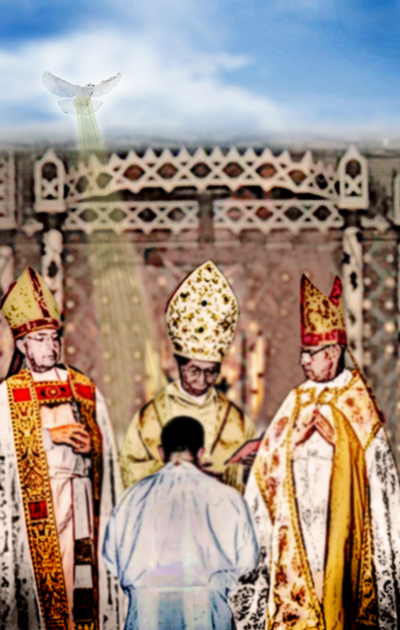
The United Roman-Ruthenian Church is not established by people, but rather it is part of the continuous Church founded founded by Jesus Christ. However, the Apostolic founder of our principle diocese is Saint Edwin Caudill. He brought his Anglican See (Diocese of the Southwest) into Orthodox and Catholic Apostolic heritage. That diocese evolved in time into the Diocese of Rome-Ruthenia. Find out more here.
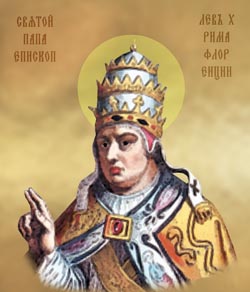
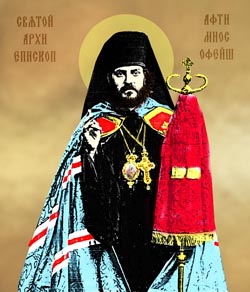
Q: Who are the Holy Fathers of the Apostolic See?
Pope Saint Leo X and Saint Archbishop Aftimios Ofiesh are known as the two Holy Fathers of the Apostolic See. Find out more here.
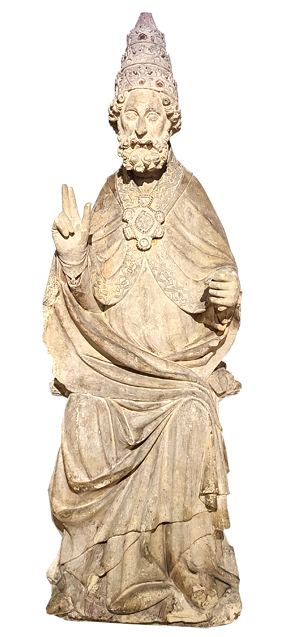
No, except where explicity stated. Although administratively independent and sovereign, the United Roman-Ruthenian Church embraces as brethren other Catholic, Orthodox, and Anglican bodies, such as the current Roman Communion (commonly referred to as the Roman Catholic Church), the Anglican Ordinariate, Eastern Orthodox Churches, and the Anglican Communion. The governments of the modern republics of Italy, German, France, Switzerland, Russia, Belarus, Ukraine, and the United States, and of the modern kingdoms of Great Britain and Spain, as well as the European Union and all other civil states, are not affiliated with the Pontifical Imperial State government or the United Roman-Ruthenian Church.
Q: Who is the head of the United Roman-Ruthenian Church?The Prince-Bishop of
Rome-Ruthenia
(Roman-Ruthenian Pope) is Supreme Pontiff of the United Roman-Ruthenian Church.
A: Both states are permitted, both for bishops and other clergy, in accordance with the Apostolic Canons and early Church practices. For more information on canonical married bishops and clergy, please see this article.

Q: The United Roman-Ruthenian Church uses certain customs. I thought only the Roman Pope could do such things?
There seems to be a common misconception among many that only the Roman Pope can lay claim to certain traditions, vestments, titles, and so on. However, this belief couldn't be further from the truth. The reality is that there are other churches that maintain similar traditions due to their own unique heritage. The United Roman-Ruthenian Church has its own set of traditions, vestments, titles, and other ceremonial elements that are an integral part of its faith.
Q: Why do some people (especially online) feel the need to put down Christians in other churches (denominations)?
It is an unfortunate
reality that some individuals feel the need to put down others
in general. This is also seen in the form of insulting
people in other churches (denominations). This
behavior can stem from a variety of factors, including insecurity, a
desire for superiority, and a lack of understanding or empathy. For
example, when people feel unsure or uncertain about their own beliefs
or practices, they may try to diminish those of others in an attempt to
validate themselves. By putting down others, they hope to bolster their
own sense of significance and confidence.
Also,
some individuals believe that their church is the only correct one,
leading them to see those who follow different paths as inferior or
misguided. This belief can create a sense of self-righteousness and a
need to assert dominance over others. This often goes along with
a lack of understanding or empath. People may hold
misconceptions
about other churches due to limited exposure or biased information.
Without taking the time to learn and empathize with different
perspectives, individuals are more likely to resort to putting others
down rather than engaging in meaningful dialogue.
In the United
Roman-Ruthenian Church, we promote understanding and respect between
Christian churches and even between religions. Education plays a vital
role in breaking down stereotypes and fostering empathy among different
groups. Additionally, cultivating an atmosphere of tolerance in
Christian charity can help combat the need for superiority
and promote both unity and personal growth.
DISCLAIMER, LEGAL, AND COPYRIGHT NOTICES